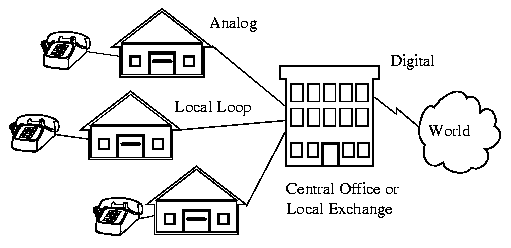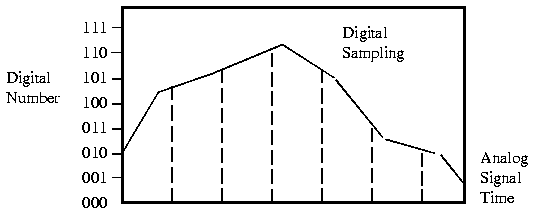| Introduction to Data Communications | ||
|---|---|---|
|
|
23c. Nyquist Theorem | Next |

At the Central Office, the analog signal is converted into a digital signal consisting of 1s and 0s.

The Nyquist Theorem states that to accurately reproduce an analog signal with a digital signal, the analog signal must be sampled a minimum of 2x the highest frequency of the analog signal.
This means that for the Voice Channel (0 to 4 kHz) to be digitized, we must sample the Voice Channel at 2x the highest frequency (4 kHz) which would be 8 kHz. This means that as soon as you digitize an analog signal, you must immediately double the bandwidth.
| Introduction to Data Communications | ||
|---|---|---|
|
|
Table of Contents | Next |